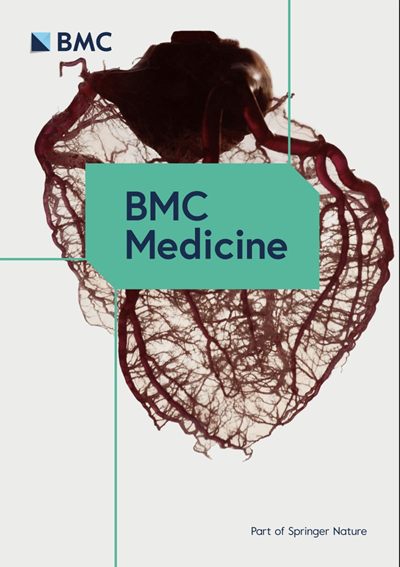2015年至2019年新西兰主要食品和饮料公司销售的包装产品的健康性和营养成分趋势
IF 7
1区 医学
Q1 MEDICINE, GENERAL & INTERNAL
引用次数: 0
摘要
饮食风险因素是全球和新西兰(NZ)的主要死亡原因。加工包装食品在食品供应中十分普遍,造成膳食中钠、饱和脂肪和糖的含量过高。提高这些食品的营养质量有可能降低人们患慢性病的风险。我们的目标是使用澳大拉西亚健康星级评价(HSR,从 0.5 星到 5 星,5 星为最健康)和营养成分(钠、饱和脂肪和总糖)对 2015-2019 年新西兰最大的食品和饮料公司生产的包装产品的健康状况进行评估。这项分析与一项更大规模的研究有关,该研究评估了食品公司为改善营养相关政策和行动而进行的结构性参与。数据来源于新西兰品牌超市食品成分数据库 Nutritrack。根据 2019 年欧睿信息咨询公司的数据,确定了新西兰年零售额最大的公司(n = 35)。所选公司的所有相关产品都被提取出来进行分析。纳入的产品共计 17,795 种,年产品范围为 3462-3672 种。主要结果是使用 HSR 估算的营养成分。健康度定义为≥3.5颗星。次要结果是每 100 克/100 毫升中的钠、总糖和饱和脂肪含量。所有结果均按总体、食品公司和食品类别进行评估。使用线性混合模型检验随时间推移的变化,并根据主要食品类别和食品公司的群集效应进行调整,控制多重比较。经模型调整后,估算出了不同年份之间的平均差异以及 95% 的置信区间。2015 年至 2019 年期间,平均 HSR 在统计上有小幅显著增长(0.08 [0.15,0.01], p = 0.024)。同期,平均总糖含量有所下降(0.78 g/100 g [0.08,1.47],p = 0.020),但平均钠或饱和脂肪含量没有显著变化。在 13 个类别中,有 7 个类别的平均 HSR 略有增加(0.1-0.2)。大多数类别(9/13)的平均总糖含量有所下降。2015 年至 2019 年间,新西兰部分包装食品和饮料的营养质量略有改善。要解决不健康饮食对健康造成的负担,还需要更多实质性的改变,政府应采取更有力的行动,减少对行业自愿举措的依赖。本文章由计算机程序翻译,如有差异,请以英文原文为准。
Trends in the healthiness and nutrient composition of packaged products sold by major food and beverage companies in New Zealand 2015 to 2019
Dietary risk factors are the leading cause of death globally and in New Zealand (NZ). Processed packaged foods are prevalent in the food supply and contribute excess amounts of sodium, saturated fat, and sugar in diets. Improving the nutritional quality of these foods has the potential to reduce population chronic disease risk. We aimed to evaluate the healthiness using the Australasian Health Star Rating (HSR, from 0.5 to 5 stars, with 5 being the healthiest) and nutrient composition (sodium, saturated fat, and total sugar) of packaged products manufactured by the largest NZ-based food and beverage companies in NZ 2015–2019. This analysis relates to a larger study evaluating structured engagement with food companies to improve nutrition-related policies and actions. Data was sourced from Nutritrack, a NZ-branded supermarket-sourced food composition database. The largest NZ-based companies from annual retail sales revenue (n = 35) were identified using 2019 Euromonitor data. All relevant products of the selected companies were extracted for analysis. Products included totalled 17,795 with a yearly range of 3462–3672 products. The primary outcome was a nutrient profile score estimated using HSR. Healthiness was defined as ≥ 3.5 stars. Secondary outcomes were sodium, total sugar, and saturated fat per 100 g/100 mL. All outcomes were assessed overall, by food company, and food category. Change over time was tested using linear mixed models, adjusting for major food categories and cluster effects of food companies controlling for multiple comparisons. Model-adjusted mean differences between years were estimated with 95% confidence intervals. There was a small statistically significant increase in mean HSR between 2015 and 2019 (0.08 [0.15,0.01], p = 0.024). Mean total sugar content decreased over the same period (0.78 g/100 g [0.08,1.47], p = 0.020), but there were no significant changes in mean sodium or saturated fat contents. Seven of the 13 categories showed small increases in mean HSR (0.1–0.2). Most categories (9/13) exhibited a reduction in mean total sugar content. Between 2015 and 2019, there were slight improvements in the nutritional quality of selected packaged foods and drinks in NZ. Much more substantive changes are needed to address the health-related burden of unhealthy diets, supported by stronger government action and less reliance on voluntary industry initiatives.
求助全文
通过发布文献求助,成功后即可免费获取论文全文。
去求助
来源期刊

BMC Medicine
医学-医学:内科
CiteScore
13.10
自引率
1.10%
发文量
435
审稿时长
4-8 weeks
期刊介绍:
BMC Medicine is an open access, transparent peer-reviewed general medical journal. It is the flagship journal of the BMC series and publishes outstanding and influential research in various areas including clinical practice, translational medicine, medical and health advances, public health, global health, policy, and general topics of interest to the biomedical and sociomedical professional communities. In addition to research articles, the journal also publishes stimulating debates, reviews, unique forum articles, and concise tutorials. All articles published in BMC Medicine are included in various databases such as Biological Abstracts, BIOSIS, CAS, Citebase, Current contents, DOAJ, Embase, MEDLINE, PubMed, Science Citation Index Expanded, OAIster, SCImago, Scopus, SOCOLAR, and Zetoc.
 求助内容:
求助内容: 应助结果提醒方式:
应助结果提醒方式:


